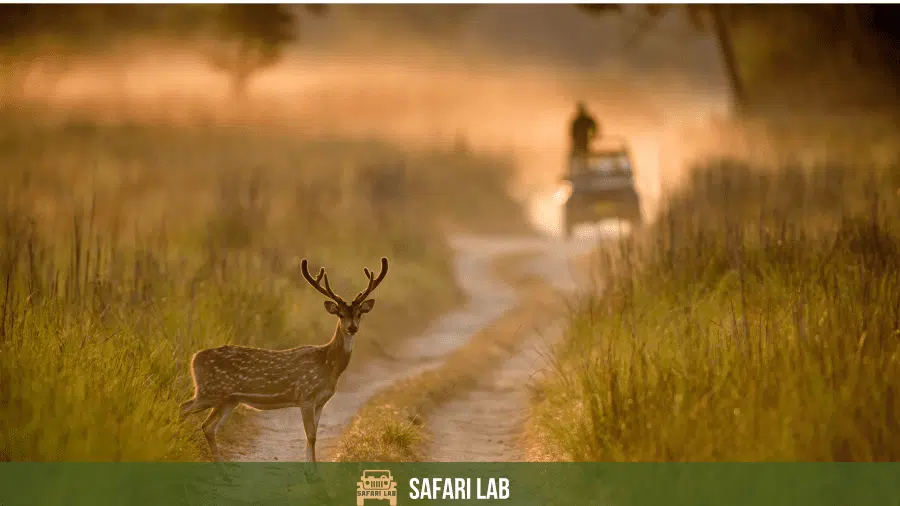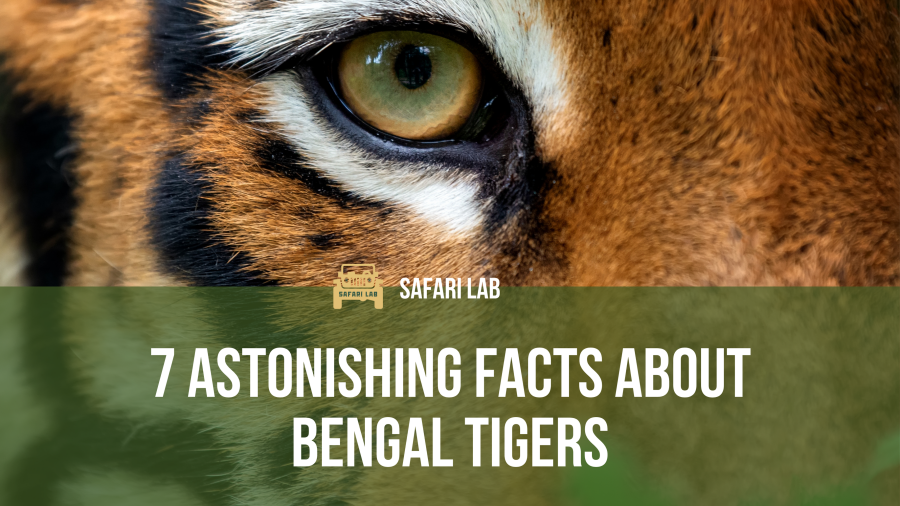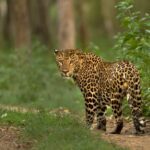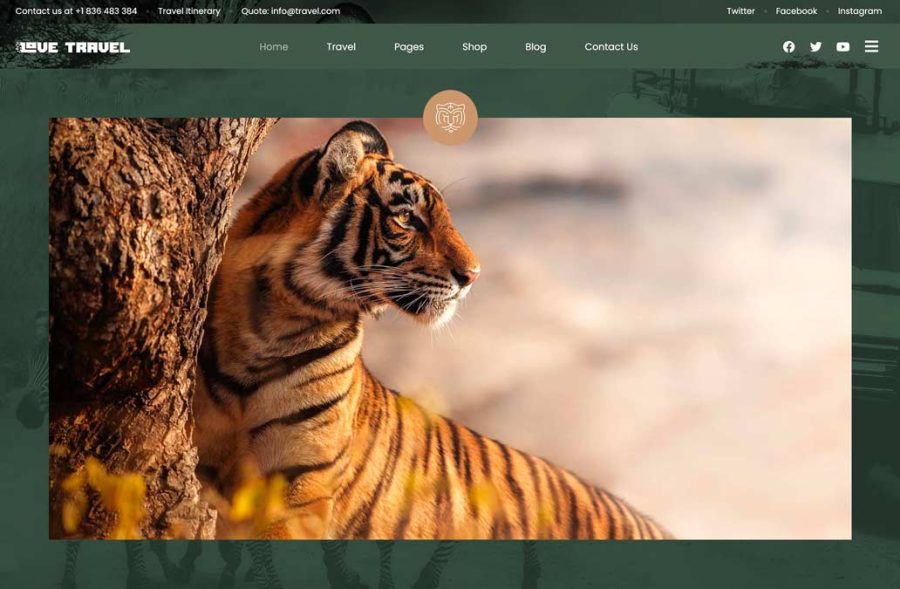Today, we talk about Monkeys in India. In the early light of dawn, as the Himalayan mist clings to the terraced slopes of the north and the temples of the south echo with the low chants of priests, a familiar figure appears—tail high, eyes bright, and purpose clear. It is neither saint nor sinner, but something that blurs the line between the two. The Indian monkey.
India is one of the richest primate habitats on Earth—a swirling tapestry of ancient forests, holy rivers, crowded cities, and crumbling temples where monkeys reign as both tricksters and deities. Here, they leap across centuries, revered in sacred scripture and reviled on government complaint registers. They are thieves and philosophers, clowns and cousins, protected by law and sometimes hunted by rumor.
The story of monkeys in India isn’t a tale told in black and white. It’s painted in the brilliant oranges of marigolds tossed at temple gates, in the gray dust of back-alley battles between rival troops, and in the green canopy of ancient rainforests where rare species like the lion-tailed macaque still cling to existence.
This article will take you beyond the tourist snapshots and into the wild lives of India’s monkey species—from the swaggering rhesus macaque of Delhi’s rooftops to the ghostly langurs of the Himalayas. We’ll explore their biology, behavior, mythological significance, and the complicated, often fractious relationship they share with humans. Along the way, we’ll ask tough questions: How do we coexist with an animal so closely tied to our own story? And what does their future look like in a country speeding toward urbanization?
So sit back, dear reader. The jungle, the temple, and the rooftop are calling—and the monkeys are already watching.
Monkey Species Found in India: From Forest Phantoms to Temple Tricksters
India is home to over a dozen native monkey species, making it one of the most primate-diverse countries in Asia. These include both macaques, known for their expressive faces and street-smart adaptability, and langurs, those elegant, long-limbed leaf-eaters often draped like statues in temple courtyards or highland forests. You’ll find the gregarious rhesus macaque squabbling in city bazaars, the critically endangered lion-tailed macaque skulking through the silent valleys of the south, and the newly discovered Arunachal macaque, tucked away in Himalayan folds like a biological secret.
Some of these species have adapted so well to human presence that they’ve practically rewritten the rulebook on wildlife survival. Others remain elusive, struggling silently in shrinking forests few outsiders ever see.
Below, we break down each of India’s native monkey species—where they live, how they behave, and why each one matters. Whether you’re a traveler hoping to identify that temple-side troop, a conservationist tracking endangered populations, or just someone curious about these charming chaos-makers, this guide will help you swing into the right branches.
Let’s meet the monkeys.
Rhesus Macaque (Macaca mulatta) – India’s Ubiquitous Urban Primate
In the bustling bazaars of Delhi, the sunlit temples of Jaipur, and the quiet villages of Bihar, one monkey reigns supreme: the rhesus macaque. This medium-sized primate—about 45–55 cm in body length with a matching tail, weighing between 4 and 10 kilograms—is unmistakable with its brown-grey coat and expressive pink face.
Habitat & Distribution
The rhesus macaque is native across much of South and Southeast Asia, but in India, it’s truly everywhere—from tropical forests and rocky outcrops to railway platforms and temple courtyards. In fact, it’s the most widely distributed primate species outside of humans, thanks to its incredible adaptability.
Social Structure & Behavior
Living in troops that can number over 200 individuals, rhesus macaques operate within complex social hierarchies. Females remain with their birth group for life, while males typically leave when they reach maturity. Troops are structured around dominant females and shifting male alliances, with frequent squabbles and grooming sessions acting as social currency.
Rhesus macaques are both arboreal and terrestrial. They forage for fruits, seeds, roots, and insects, and aren’t above raiding trash cans or stealing from markets. They’ve even mastered the art of unzipping bags and opening food wrappers. Meals are often stored in cheek pouches—a handy evolutionary snack pack—for later consumption.
Human-Monkey Interactions
In cities, rhesus macaques have become so common they’re practically part of the urban ecosystem. Yet this closeness has sparked ongoing conflicts. From biting incidents in schools and offices to temple thefts and traffic disruptions, their presence is often more chaotic than charming.
Their spiritual status adds another layer of complexity. Revered as symbols of Lord Hanuman in Hinduism, they’re often fed and protected—even as they wreak havoc in urban centers. But policy changes in recent years have shifted their legal standing. Once classified under Schedule II of the Wildlife Protection Act, rhesus macaques have now been moved to Schedule IV, reducing their protections and sparking debate among conservationists.
Ecological Impact & Conservation Status
Despite their reputation as urban pests, rhesus macaques play a vital role in the wild. They help disperse seeds and maintain ecological balance in their natural habitats. The IUCN currently lists them as a species of “Least Concern,” largely due to their widespread range and large population.
Still, rising numbers in human-dominated landscapes are causing ecological strain. Many natural populations are being replaced by human-dependent troops that no longer serve the same ecological roles. In response, several Indian states have introduced sterilization drives—vasectomies for males and tubectomies for females—in an effort to curb the conflict without resorting to culling.
Bonnet Macaque (Macaca radiata) – The South Indian Classic with a Hairdo
If you’ve ever wandered through the ruins of Hampi or the streets of Madurai, you’ve probably locked eyes with a monkey whose hair looks suspiciously like a monk’s tonsure or a Beatles wig. That’s the bonnet macaque—named for the swirl of hair radiating outward from its crown like a poorly planned hairstyle that somehow became iconic.
Habitat & Distribution
Endemic to peninsular India, the bonnet macaque is found south of the Godavari River—its range extending through Karnataka, Kerala, Tamil Nadu, Andhra Pradesh, and parts of Goa. You’ll spot them on temple walls, forest fringes, roadside trees, and even urban colonies. Unlike their northern cousins, the bonnet macaques tend to stick to the southern half of the subcontinent, often overlapping with human habitation in both urban and rural settings.
Physical Traits & Behavior
Slightly smaller and more delicately built than the rhesus macaque, bonnet macaques typically weigh between 3.5 to 8 kilograms. Their tails are long and carried gracefully, and their faces have a softer, more inquisitive look—accentuated by that signature hair whorl.
They’re highly social, living in troops that vary from 10 to over 50 individuals. These groups exhibit a matrilineal structure with females staying in the troop for life and males moving out upon maturity. Bonnet macaques are also vocal little creatures, communicating through grunts, squeals, lip-smacks, and a theatrical range of facial expressions.
Diet & Intelligence
Omnivorous and opportunistic, they feed on fruits, seeds, roots, insects, and human leftovers. Like other macaques, they’ve learned to manipulate their environment—opening doors, unzipping bags, even turning on taps. In laboratory studies, they’ve shown remarkable cognitive abilities, making them common subjects in behavioral research (though this has sparked ethical debates in recent years).
Human Interaction & Cultural Presence
Though not as notorious as rhesus macaques, bonnet macaques have their own human conflicts—especially in temple towns where they’ve become food beggars and occasional troublemakers. Their presence at pilgrimage sites has cemented their role in local folklore and rituals, but increasing urban contact is leading to more frequent run-ins with people.
Their relationship with humans is a classic tale of coexistence on the edge—familiar enough to be loved, wild enough to be unpredictable.
Conservation Notes
Bonnet macaques were once abundant, but recent studies suggest localized declines, especially in areas where rhesus macaques have been introduced—often displacing their southern cousins. Habitat loss and increasing urbanization have fragmented populations, and some subspecies are thought to be more at risk than previously believed.
Despite being listed as “Least Concern” on the IUCN Red List, conservationists urge more localized monitoring—especially in forested habitats where they face greater ecological threats than in urban environments.
Lion-tailed Macaque (Macaca silenus) – The Rainforest Phantom of the Western Ghats
High in the canopy of the Western Ghats, far from the honks of highways and the hum of human settlements, lives a creature so rare, so exquisitely elusive, that even seasoned wildlife biologists consider a glimpse a blessing. With a charcoal-black coat and a silvery mane framing its solemn, almost melancholy face, the lion-tailed macaque is India’s rainforest royalty.
Habitat & Range
This species is endemic to the lush rainforests of the Western Ghats—a 1,600-kilometre-long mountain chain running parallel to India’s southwestern coast. These primates are true canopy specialists, rarely descending to the ground. Their domain is the uppermost levels of evergreen and semi-evergreen forests in states like Kerala, Tamil Nadu, and Karnataka.
The irony? Despite living in one of the world’s most densely populated countries, the lion-tailed macaque avoids human eyes with almost monk-like discipline.
Physical Features & Behavior
Measuring around 45–60 cm in body length and weighing up to 10 kilograms, these monkeys aren’t especially large. But they carry themselves with a quiet nobility. Their crowning glory—the greyish-white mane encircling a black, bare face—has earned them their “lion-tailed” name, although the actual tail is thin and tufted, more reminiscent of a cat’s flick than a lion’s flourish.

Socially, they live in small, tight-knit groups of 10 to 20 individuals. Unlike their rowdier cousins in cities, these macaques are shy, secretive, and nearly silent in their movements. Communication is subtle—a mix of low grunts, facial cues, and the occasional alarm call if a predator draws near.
Diet & Ecological Role
Lion-tailed macaques are primarily frugivorous, favoring ripe rainforest fruits, supplemented by insects, flowers, and leaves. Their preference for specific fruiting trees makes them vital seed dispersers—quiet engineers of their ecosystem, planting future forests with every meal.
This role becomes critical in old-growth rainforests, where regeneration depends on such specialized feeders. When they vanish, so too does the resilience of the forest.
Threats & Conservation Status
Despite their regal bearing, the lion-tailed macaque teeters on the edge. Listed as Endangered by the IUCN, their population is fragmented across isolated forest patches. Once-continuous habitat has been chopped into a patchwork quilt by tea estates, dams, roads, and logging.
Current estimates suggest fewer than 4,000 individuals remain in the wild.
Conservation efforts are ongoing in protected areas like Silent Valley National Park, Kudremukh National Park, and Valparai plateau, where researchers, NGOs, and forest departments work to preserve remaining habitat and promote wildlife corridors.
Encouragingly, in Valparai, a community-led initiative using canopy bridges has allowed lion-tailed macaques to cross roads safely, proving that coexistence—even with ghosts of the canopy—is still possible.
Assamese Macaque (Macaca assamensis) – The Stoic Sentinel of the Hills
Where the mist lingers longest and the rhododendrons bloom in silence, a shadow moves with deliberate grace. It doesn’t chatter. It doesn’t steal your snacks. It watches. That’s the Assamese macaque—India’s introvert in a world full of extroverted primates.
Range & Habitat
Found along the eastern Himalayan slopes and forested regions of Northeast India, the Assamese macaque is a true mountain monkey. Its range stretches from Arunachal Pradesh and Sikkim to parts of Bhutan, Myanmar, and even down into northern West Bengal.
They prefer subtropical and temperate forests, often at elevations ranging from 1,000 to 3,500 meters. You’ll spot them in places like the Eaglenest Wildlife Sanctuary or Neora Valley National Park—if you’re lucky and looking very quietly.
Appearance & Adaptations
At first glance, they don’t look particularly flashy. No flamboyant mane, no bright markings. But look closer. Their fur is a dense, earthy brown—perfect camouflage against bark and moss. Their bodies are built tough and compact, adapted for high-altitude living. A short tail, barely a stump, sets them apart from their longer-tailed cousins.
They exude the quiet strength of a species that has endured for millennia in rugged terrain. When the cold bites, they huddle. When food is scarce, they wait.
Social Life & Diet
Assamese macaques live in small to medium-sized groups, governed more by subtlety than spectacle. Their social structure is less hierarchical than that of other macaques. Conflicts are rare, resolved with avoidance rather than aggression—a refreshing change from the high-drama politics of rhesus troops.
Their diet is as varied as the seasons—leaves, fruits, seeds, bark, and the occasional insect. Come winter, they’ll munch on lichens and buds, scraping a living from frostbitten trees like herbalist monks of the mountains.
Conservation Status & Challenges
Although listed as Near Threatened by the IUCN, Assamese macaques face mounting pressures. Habitat fragmentation, road construction, and shifting cultivation patterns have begun to carve up their home ranges.
Their elusive nature makes them difficult to study, and they often get overlooked in conservation agendas dominated by more “charismatic” species. But make no mistake—these monkeys are critical players in Himalayan ecosystems, quietly dispersing seeds and maintaining the forest’s delicate rhythm.
Arunachal Macaque (Macaca munzala) – The Newcomer from the Ancient Hills
Discovered only in 2004, the Arunachal macaque is a living reminder that the world is still full of secrets. In the dense, mist-laden forests of India’s easternmost state, a stocky, thick-furred monkey lumbers through the canopy—unhurried, unbothered, and unknown for centuries.
Discovery & Significance
In a world where most large mammals were cataloged long ago, the discovery of a new monkey species in the early 2000s sent ripples through the scientific community. Local Monpa communities had known of the macaque for generations, calling it “mun zala” or “deep forest monkey,” but it wasn’t until researchers formally described it that the world took notice.
Its discovery highlighted just how underexplored—and biologically rich—Arunachal Pradesh truly is.
Appearance & Adaptations
The Arunachal macaque is one of the heaviest and most rugged of India’s macaques. It sports a dense, dark brown coat suited for cold, high-altitude forests—some populations live at altitudes over 3,000 meters. Its face is broad and pinkish, often compared to the Tibetan macaque in appearance, but genetically and geographically distinct.
Unlike the lankier macaques of the plains, this species is built like a mountaineer: thick-set, low-tailed, and strong-limbed, perfect for navigating steep, slippery forest slopes.
Habitat & Range
Restricted to a narrow range in western Arunachal Pradesh, particularly around Tawang and West Kameng, this macaque inhabits temperate broadleaf and mixed conifer forests. It’s an area of spiritual significance and deep biodiversity—but also one of geopolitical sensitivity, with roads, military activity, and infrastructure creeping ever deeper into wild spaces.
Behavior & Ecology
They live in small groups, often in rugged, inaccessible terrain, which helps explain why they evaded scientific documentation for so long. Unlike their urban cousins, Arunachal macaques show little interest in human settlements and maintain a wary distance from people.
Their diet mirrors that of other high-altitude primates—leaves, fruits, bark, insects—whatever the season offers. Winters are harsh, and survival depends on their ability to navigate food scarcity with patience and strategy.
Conservation Status & Threats
The Arunachal macaque is currently listed as Endangered, with a known population of just a few hundred individuals. Major threats include deforestation, hydroelectric projects, expanding roads, and even occasional hunting, despite cultural taboos in some communities.
Because of their limited range and vulnerability to habitat disturbance, conservationists are calling for increased protection in the region—including new sanctuaries and community-led monitoring programs.
Golden Langur (Trachypithecus geei) – The Forest Flame of Assam
In the dappled morning light of Assam’s sal forests, a golden shimmer leaps between the branches. Not sunlight, not fire—but fur. Flowing, sunlit fur. The golden langur moves like a spirit through the trees, silent as wind and just as fleeting. It’s no wonder local tribes once believed it descended from the gods.
Where to Find Them
Golden langurs are found in a narrow, fragmented band of forest that hugs the India-Bhutan border—primarily in western Assam (in places like Manas National Park and Chakrashila Wildlife Sanctuary) and the foothills of Bhutan’s Black Mountains.
This limited range makes them one of the most geographically restricted primates in the world, and that alone would be reason for concern. But their habitat isn’t just small—it’s vanishing.
Striking Looks & Unique Features
Golden langurs are unmistakable. With their long, silky coats glowing in hues of cream, gold, and orange (more vivid in males), and their black, mask-like faces, they look like they’ve walked straight out of a mythical epic. Long limbs and a tail often longer than the body itself (sometimes up to 90 cm) give them a near-weightless elegance as they move through the treetops.
They’re arboreal to the extreme, rarely coming to the ground, and their leaps between trees are nothing short of balletic—if ballet dancers could leap 30 feet from a sal tree to a fig.
Behavior & Social Life
Golden langurs live in cohesive, peaceful troops of 8 to 20 individuals. Unlike the more aggressive macaques, these langurs maintain a graceful decorum, spending much of their day grooming, feeding, or simply basking in the sun with their young clinging to them like tiny golden shadows.
Their diet is made up primarily of young leaves, fruits, seeds, and flowers—though they’re notoriously picky eaters, favoring select trees depending on the season.
A Sacred Presence
In both Bhutanese and Assamese cultures, golden langurs hold a special place. They’re considered sacred by many local communities, especially the Bodo people, who protect them with deep reverence. This cultural shield has, in many cases, offered better protection than legislation alone.
Conservation Status & Challenges
Golden langurs are listed as Endangered on the IUCN Red List. Their primary threat? Habitat fragmentation. Roads, settlements, and agricultural encroachment have cut their forest into islands, stranding langur populations and limiting gene flow.
In some fragmented patches, langurs have been observed venturing dangerously close to human habitations, forced into risky tree crossings or coming into contact with power lines. Conservation efforts have included community-managed sanctuaries, habitat corridors, and eco-tourism models that involve local people in protection and monitoring.
There’s also a growing call for transboundary conservation between India and Bhutan, recognizing that wildlife, like the wind, does not stop at national borders.
Hanuman Langurs (Semnopithecus spp.) – Sacred Shadows of Stone and Forest
With long limbs draped in ash-grey fur, a jet-black face framed by white whiskers, and a tail arcing like a Sanskrit verse in motion, the Hanuman langur moves with the grace of myth and the discipline of meditation. Found in cities and sacred groves alike, these monkeys aren’t just residents of India—they’re relics of its stories.
What Exactly Is a Hanuman Langur?
First, a clarification: “Hanuman langur” isn’t one species—it’s a group. Historically lumped into one catch-all category (Semnopithecus entellus), recent taxonomic revisions have split them into multiple species based on geography, genetics, and skull morphology. Today, India recognizes several species and subspecies, including:
- Northern Plains Gray Langur (Semnopithecus entellus)
- Tarai Gray Langur (S. hector)
- Black-footed Gray Langur (S. hypoleucos)
- Southern Plains Gray Langur (S. dussumieri)
- Nilgiri Langur (S. johnii) – sometimes grouped separately
But regardless of taxonomic hairsplitting, most people across India know them by a single name: Hanuman langur.
Sacred Status & Cultural Clout
In Hindu mythology, these monkeys are seen as earthly manifestations of Lord Hanuman—the mighty monkey god of the Ramayana. Known for his strength, loyalty, and intellect, Hanuman is a cultural cornerstone, and his langur namesakes enjoy a near-untouchable status in many communities.
Feeding them is seen as a pious act. Harming them? Unthinkable in many towns. You’ll find troops lounging on temple roofs, swinging from market wires, or gracefully pacing the marble edges of shrines—part guardian, part local celebrity.
Where They Live
Everywhere. From the deserts of Rajasthan to the forests of Kerala, Hanuman langurs have adapted to a staggering range of habitats. They thrive in deciduous forests, high-altitude pine belts, dry scrublands, and urban neighborhoods. Their versatility rivals that of the rhesus macaque—but their demeanor couldn’t be more different.
Looks & Personality
Hanuman langurs are tall, long-limbed, and ethereal in appearance. Males can weigh up to 20 kg, and their tails, often longer than their body, are carried in a graceful loop or “question mark” over the back.
Unlike the more mischievous macaques, langurs are generally calm, even philosophical in their bearing. You’ll see them sitting in the classic cross-legged pose, gazing at nothing in particular, as if contemplating the eternal dance of Shiva.
Social Life & Diet
Langurs live in troops ranging from small family units to sprawling bands. Many groups are polygynous, with one dominant male, but multi-male troops are not uncommon. They’re fiercely protective of their young, and infanticide by rival males is sadly not rare during troop takeovers.
As folivores, they primarily eat leaves, supplemented by fruits, flowers, and the occasional snack pilfered from an offering plate. Their sacculated stomachs allow them to digest tough cellulose-rich diets, making them true masters of tree-top cuisine.
Human-Wildlife Interactions
Despite their sacred status, langurs in urban areas often fall victim to their own celebrity. Overfeeding, habitat loss, roadkill incidents, and even electrocution are rising threats. In some areas, human-langur conflicts are increasing—not due to aggression, but due to overcrowding and ecological imbalance.
Some municipalities have controversially tried to replace rhesus macaques with langurs to scare them off—often by using captive langurs as “monkey chasers.” This practice raises serious ethical and ecological concerns.
Conservation Notes
Most Hanuman langurs are listed as Least Concern, but habitat fragmentation and urban encroachment are eroding their populations in certain areas. Species like the Nilgiri langur, however, are considered Vulnerable due to more specific habitat requirements and lower numbers.
Their biggest strength—their cultural invincibility—might also be their biggest vulnerability. Because they’re seen as divine, conservation efforts often assume they’re safe. But without formal protection and habitat management, even sacred monkeys can disappear.
Monkeys in India – Sacred Status and Cultural Symbolism
In most parts of the world, a monkey stealing your sunglasses is a nuisance. In India, it might just be divine mischief. For here, monkeys aren’t merely wildlife—they’re walking, leaping, tail-swinging reminders of godly lore.
Lord Hanuman and the Langurs – Mythological Roots
At the spiritual heart of the monkey’s exalted status is Lord Hanuman, the monkey-faced deity of the Hindu epic Ramayana. Known for his unwavering devotion, Herculean strength, and boundless humility, Hanuman is the embodiment of service and selflessness. His legend isn’t just religious—it’s cultural oxygen, permeating festivals, prayers, martial arts, and even political rallies.
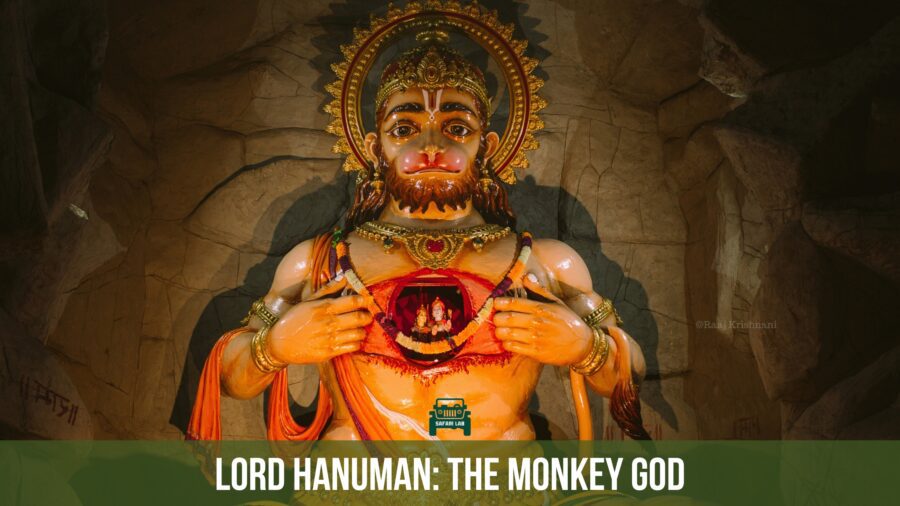
Langurs, particularly the gray Hanuman langurs (Semnopithecus spp.), are considered his earthly manifestations. Their solemn, meditative posture, expressive black faces, and majestic tails make them uncanny avatars of the god himself. Harming or insulting them is not only taboo—it’s spiritually dangerous in many communities.
Monkeys in Ritual and Temple Culture
Throughout India, especially in older temple towns, monkeys are not just tolerated—they’re integrated. They’re fed, garlanded, and sometimes even prayed to. In Varanasi, monkeys perch on rooftops like minor deities. In Vrindavan, they’re believed to be companions of Lord Krishna.
Feeding monkeys is seen as an act of merit (punya), believed to earn blessings or cleanse past karma. This practice peaks during Tuesdays and Saturdays, days associated with Hanuman, when devotees offer bananas, jaggery, and chickpeas at temples or roadside shrines.
Famous Monkey Temples: Pilgrimage Meets Primate
- Galta Ji Temple, Jaipur: Nicknamed the “Monkey Temple,” this 16th-century complex is home to hundreds of rhesus macaques. They bathe in sacred tanks, scavenge offerings, and occasionally steal a priest’s lunch—all while being treated with unwavering reverence.
- Pashupatinath Temple, Nepal: Though technically outside India, this UNESCO site has cultural parallels. Its monkey population is sacred, living among sadhus and worshippers, sometimes even mimicking human rituals in eerie synchronicity.
Monkey Festivals and Feeding Customs
While there’s no national “Monkey Day” in Hinduism, Hanuman Jayanti (the birth of Lord Hanuman) sees thousands offering sweets and fruit to monkeys in his honor. In some rural parts of India, local fairs even include rituals specifically for “appeasing” monkeys, believed to bring good harvests or drive away evil.
Monkey-Human Conflict in Urban India: When Sacred Turns Savage
In the narrow lanes of Delhi, a man loses his lunch to a monkey squad. In Shimla, schoolchildren duck as a simian SWAT team launches a coordinated biscuit raid. Sacred? Yes. Harmless? Not always.
As India’s cities grow and forests shrink, the once-sacred monkey has become a surprisingly frequent headline—and not for spiritual reasons. Monkey-human conflict is now a significant urban issue, affecting public safety, infrastructure, and even politics.
The Root Causes
Several factors are converging to fuel this modern-day turf war between monkeys and humans. At its core lies one key issue: we’ve changed the rules of coexistence without telling the monkeys.
- Urban Expansion & Habitat Loss: As cities swallow surrounding forests, monkeys are forced into urban environments where food and shelter are easier to find—but competition is fierce.
- Feeding Traditions: Centuries of religious feeding customs have inadvertently created monkey populations dependent on human handouts. When those handouts vanish—or are denied—aggression can follow.
- Garbage & Easy Calories: Overflowing bins, open food stalls, and unsecured rooftops make foraging a breeze. Why search the jungle for figs when you can eat samosas from a plastic bag?
- No Fear of Humans: With cultural protection acting as a shield, many urban monkeys have grown bold, even aggressive. They know we won’t fight back—at least not immediately.
Hotspots of Conflict
This isn’t an isolated phenomenon. The monkey invasion is national—and intensifying.
- Delhi: The capital has a monkey problem so widespread that it once employed men dressed as langurs to scare off rhesus macaques near Parliament. (Spoiler: it didn’t work for long.)
- Shimla & Mussoorie: Popular hill stations now suffer from troop invasions, leading to injuries, tourist complaints, and damage to local businesses.
- Vrindavan & Mathura: Here, the sacred veneer is strongest, but the monkeys still bite. Literally. Locals carry sticks, tourists lose phones, and hospital visits for monkey-related injuries spike during festivals.
Government Response: From Slingshots to Sterilization
Managing monkey populations in a country that worships them is a bureaucratic and ethical tightrope. Culling is off the table. Relocation sparks territorial conflicts. So what’s left?
- Sterilization Programs: Implemented in several states, including Himachal Pradesh and Delhi, these involve vasectomies and tubectomies. It’s slow and costly but currently the most viable humane option.
- Monkey Catchers: Specialist teams are sometimes deployed to trap and relocate aggressive individuals—but where to release them remains a controversial puzzle.
- Feeding Bans & Fines: Some urban zones have introduced penalties for feeding monkeys, though enforcement is patchy and public support lukewarm at best.
The Bigger Picture
At the core of the conflict is a question we haven’t answered well: Can we truly coexist with a wild animal we’ve both deified and domesticated by default? The monkey isn’t just adapting to our cities—it’s reshaping them.
And as we race toward urbanization, the balance is tipping fast. What was once folklore is now public policy. What was once divine may now need a permit.
FAQ: Monkeys in India
Q. Are monkeys protected in India?
A. Yes, but the level of protection varies. Most monkey species are listed under India’s Wildlife Protection Act. However, the rhesus macaque was downgraded from Schedule II to Schedule IV in 2022, reducing its legal protections. Endangered species like the lion-tailed macaque and golden langur remain under Schedule I.
Q. Can I keep a monkey as a pet in India?
A. No. It is illegal to keep monkeys as pets under the Wildlife Protection Act. Doing so is punishable by fines and imprisonment. Monkeys are wild animals with complex needs and are not suited for domestic life.
Q. What should I do if I encounter aggressive monkeys?
A. Stay calm. Avoid direct eye contact, don’t show fear, and never try to take food back. Secure your belongings, don’t carry food openly, and back away slowly. In high-conflict areas, report incidents to local wildlife or forest authorities.
Q. Why are monkeys entering cities more often?
A. Due to habitat loss, urban expansion, and the abundance of easy food sources like garbage and offerings. Cultural practices of feeding monkeys also encourage their presence in towns and cities.
Q. Do monkeys help the environment?
A. Yes. Monkeys play a crucial ecological role, especially as seed dispersers. By consuming fruits and spreading seeds, they help maintain forest diversity and support plant regeneration.
Q. Why are monkeys considered sacred in Hinduism?
A. Monkeys are associated with Lord Hanuman, a revered deity in Hindu mythology known for his strength, loyalty, and wisdom. Feeding or protecting monkeys is often seen as a way to honor Hanuman and earn spiritual merit.
Q. Are monkey bites common in India?
A. They can be, especially in tourist-heavy areas and temple towns. Always treat monkey bites seriously. Clean the wound thoroughly and seek immediate medical care, including rabies post-exposure treatment if necessary.
Conclusion: Monkeys of India – Between Gods, Ghosts, and Grit
From the mist-veiled canopies of the Western Ghats to the heat-shimmered rooftops of Jaipur, monkeys are stitched into the very fabric of India—mythical, mischievous, misunderstood. They are temple guardians and forest phantoms, street performers and seed planters, revered in scripture and resented in city streets.
And yet, their story is also ours.
We’ve shaped them with our legends and our garbage, with sacred offerings and shrinking forests. We’ve fed them with devotion, fought them with bureaucracy, and tried to manage a relationship that defies simple categories. Wild, yet familiar. Holy, yet hunted. A mirror, perhaps, to our own contradictions.
So the next time you see a langur perched in meditation on a temple wall or a rhesus macaque eyeing your snack with criminal intent, remember: they are not just monkeys. They are memory, myth, and biology in motion.
Their survival—and our peace—depends not on domination, but understanding.
And perhaps a few less bananas.



